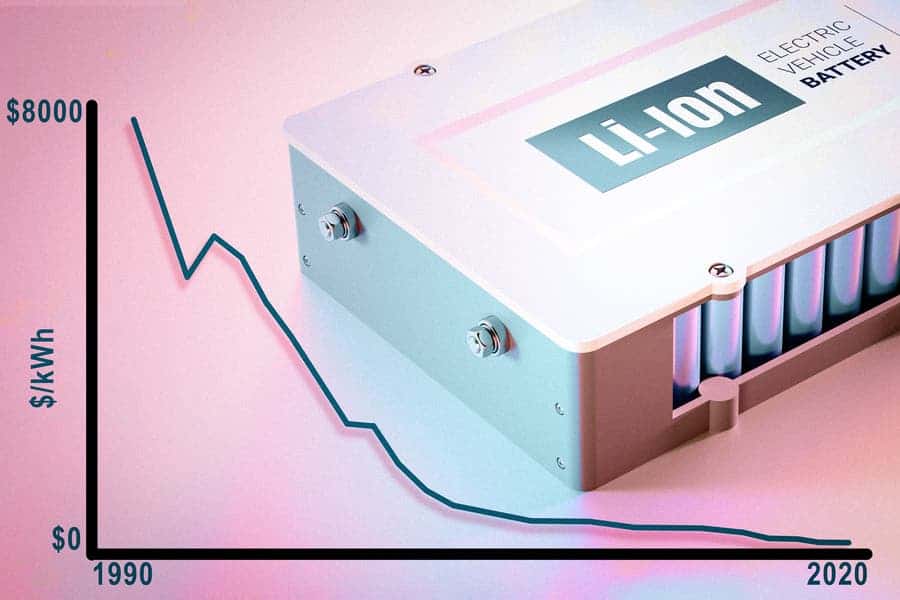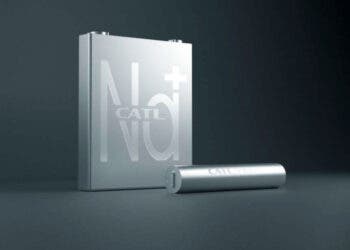
Lithium-ion is the most prolific battery technology currently in use due to its high energy density and low cost. Their importance cannot be understated. Beyond powering mobile devices and electric cars, Li-ion batteries are our best bet towards transitioning to a 100% renewable future, an essential goal if we’re to stave off the climate crisis.
Until not too long ago, the widescale adoption of Li-ion batteries has been delayed due to economic reasons. But that is no longer true. Earlier this year, researchers at MIT examined market data and found that the price for Li-ion batteries has declined by a staggering 97% since they were first introduced in 1991, right on par with cost reductions in solar panels tech.
Now, in a new study that appeared today in the journal Energy & Environmental Science, the MIT researchers broke down what exactly contributed to this exceptional cost reduction.
“That study showed how lithium-ion batteries improved. We also wanted to elucidate why lithium-ion batteries improved, which is what this study investigates. We sought to better characterize the mechanisms that enabled the rapid improvement of lithium-ion batteries. Understanding these mechanisms can help improve decisions made by researchers, business leaders, and policymakers when they design strategies to further improve the performance and reduce the costs of important clean energy technologies,” Micah Ziegler, first author of the new study and a postdoc at MIT, told ZME Science.
Perhaps surprisingly, it’s not economy of scale that made batteries affordable but rather advances following research and development — by far. Research and development, particularly in chemistry and material science, accounted for more than 50% of the cost decline, with factors of economy of scale (manufacturing, supply chain, etc) coming in second.
“Our results suggest that sustaining R&D investments over longer periods of time may be particularly essential for improving electrochemical storage technologies, for which a diversity of material choices could afford improvement,” Ziegler said.
Ziegler and Jessika Trancik, a professor at MIT’s Institute for Data, Systems, and Society, arrived at these results after applying a sophisticated methodology that was previously employed to plot the cost reduction in time for silicon solar panels, but also the rising costs of nuclear energy. This model can help disentangle the intricate web of dependencies and shine a light on what’s truly important.
The challenge lay in collecting reliable data that could be fed into this fundamental model.
“To disentangle and quantify the many factors that contributed to the improvement of lithium-ion batteries, we collected data from a wide variety of sources, including peer-reviewed journal articles, industry and government reports, product specification sheets, and press releases,” said Ziegler.
And although Li-ion batteries have become relatively cheap, there is still a lot of room for even further cost reductions. By one estimate, prices could drop to $70 per kilowatt-hour by 2050 – about half of today’s market prices.
Understanding what particular factors drive technological improvements and cost reductions can be critical if we’re to maintain the same pace of development. In this case, there is now data-backed evidence that doubling down on R&D is still worth it, seeing how historically this yielded the most dividends — and this doesn’t necessarily apply solely to batteries.
“Lithium-ion batteries are not the only technology we can learn from. Understanding why some technologies have improved rapidly, and why others have not, can help us further improve efforts to bring down the costs of clean energy technologies,” Ziegler added.






